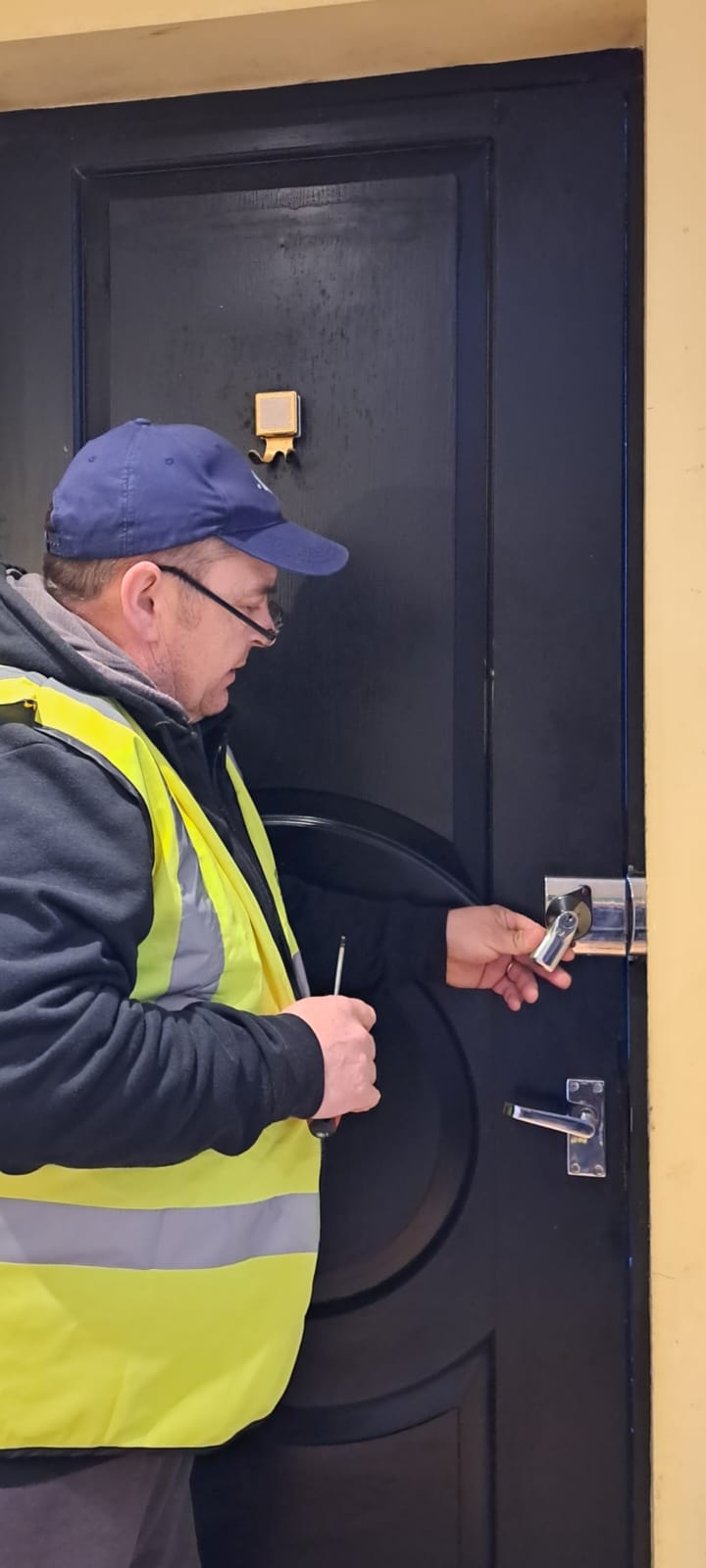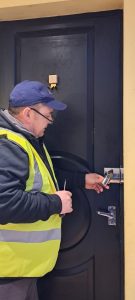Losing your key can happen to anyone. Before panicking, it’s important to stay calm, confirm the situation, and follow a structured approach to regain access legally and safely.
Step 1: Double‑Check the Basics
- Retrace your steps, check bags, jackets, and car seats carefully. Many locksmith callouts begin with keys later found nearby.
- If another household member or landlord has a spare key, contact them first before trying to open the door yourself.
Step 2: Identify the Lock Type
Different locks require different methods to open. Interior privacy locks, for example, often have a small hole in the handle that can be opened using a straightened paperclip or tiny screwdriver.
Exterior locks such as Euro cylinders, deadbolts, or mortice locks will need specialised approaches or a locksmith’s help.
Step 3: Safe DIY Options (for your own property)
- Spring latch doors: Slide a laminated card (e.g., an old bank card) between the frame and latch, bending slightly to retract it.
- Knob locks with privacy buttons: Insert a straight wire or unfolded paperclip into the small hole and press until you hear a click.
- Loose handles: Sometimes the latch can be manually pulled back by removing the handle’s screws carefully.
- uPVC doors: If it’s unlocked but won’t open, pull the handle upwards while applying gentle pressure; forcing can damage the gearbox.
Avoid inserting improvised tools into modern locks like cylinder types because this can cause permanent internal damage and make later repair more expensive.
Step 4: Call a Locksmith If:
- All DIY methods fail, or you risk damaging the door.
- You’ve lost a key to an external door; in this case, the priority is security, not just access. A professional locksmith can open the lock non‑destructively and often re‑pin or replace the cylinder to ensure old keys no longer work.
Locksmith Tip
Once access is regained, consider upgrading to a key‑safe, digital keypad, or smart lock system to avoid future lockouts. Always store one spare key securely off‑site with a trusted person.
Losing a key is stressful, but with patience and without resorting to brute force, the solution is usually quick and damage‑free.


